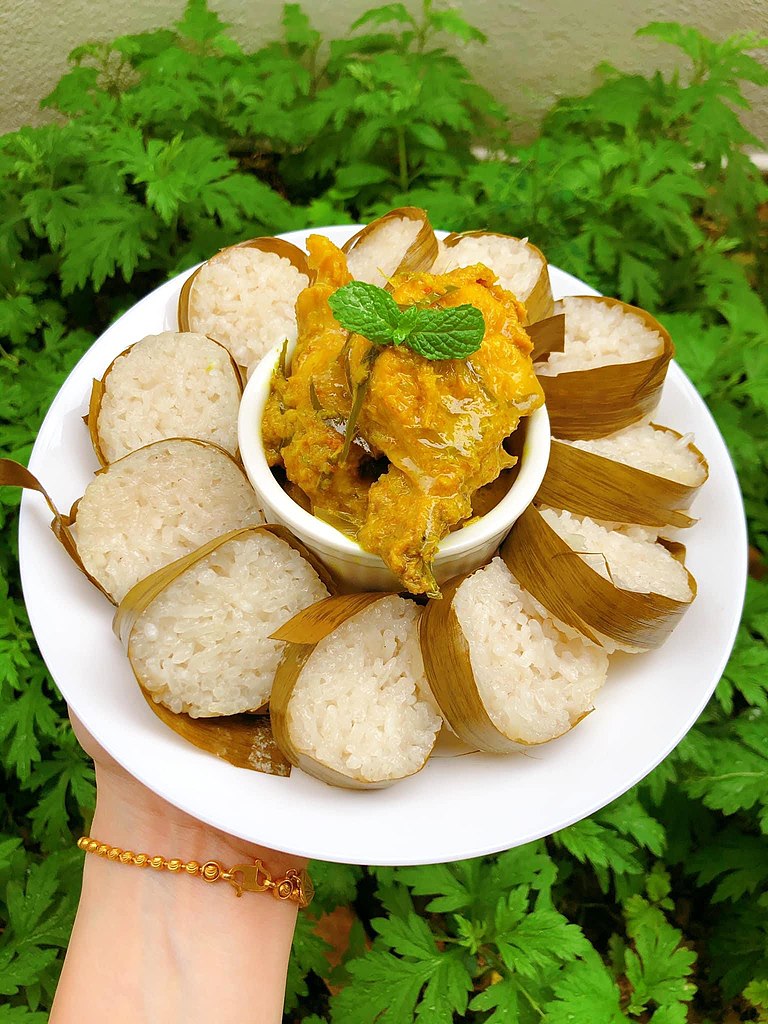In the kitchen, the hollow culms or stems of the bamboo, which can withstand the scorching flames of an open fire, have long been used as cooking receptacles throughout Southeast Asia. These sturdy natural ovens are perfect for cooking both savoury and sweet dishes, plus there’s no washing up to do after. But it’s not just bamboo tubes that are highly prized.
Bamboo shoots, obtained by stripping away the tough outer leaves of young bamboo, contain essential nutrients like thiamin, niacin and vitamin B6, and are showcased in many Southeast Asian dishes including salads, stir-frys and braised dishes.
1. Mang xao thit bo
In Vietnam, small bamboo shoots that are tender and have a mild earthy flavour are used in mang xao thit bo, a stir-fried dish of bamboo shoots and beef.
 To make the dish, slivers of beef marinated with fish sauce, black pepper, minced garlic and shallots are browned in a hot pan, before the bamboo goes in. The pre-boiled bamboo shoots are sliced into thin uniform pieces for quick cooking.
To make the dish, slivers of beef marinated with fish sauce, black pepper, minced garlic and shallots are browned in a hot pan, before the bamboo goes in. The pre-boiled bamboo shoots are sliced into thin uniform pieces for quick cooking.
Once the shoots are cooked, the heat is turned off and a handful of chopped fresh coriander leaves is added to the dish. It’s that simple.
2. Manok pansuh
A favourite of the Iban, Bidayuh and Orang Ulu ethnic communities in the East Malaysian state of Sarawak, manuk pansuh is a celebratory dish featuring chicken cooked in freshly-cut bamboo.
Adding to its clean, natural flavours are aromatics like lemongrass, ginger, galangal and torch ginger, as well as salt and tapioca leaves which are added at the end to seal the opening of the bamboo tube.
As the manuk pansuh cooks slowly over a wood fire, the bamboo imparts a lovely smokiness to the dish. The result – juicy, fork-tender chicken in a fragrant gravy, best served over a steaming mound of rice.
3. Khao lam
Made with white, red or black glutinous rice, palm sugar, red beans and lashings of coconut milk, Thailand’s yummy khao lam is cooked in bamboo culms over hot coals.
 While the basic version of khao lam is already scrumptious, this street food fave is often zhooshed up with extras like durian, yam and sweet corn.
While the basic version of khao lam is already scrumptious, this street food fave is often zhooshed up with extras like durian, yam and sweet corn.
Khao lam can also be found in Laos and Vietnam, where it’s known as com lam, and in Cambodia, where the local version of the dessert, kralan – prepared with the addition of black-eyed peas and grated coconut – is savoured during the Khmer New Year.
4. Lemang
This delicacy, said to originate from the Minangkabau highlands of West Sumatra, Indonesia, features glutinous rice mixed with coconut milk slow-roasted in bamboo stems.
Typically, the bamboo stems are lined with scorched banana leaves to prevent the grains from sticking to the bamboo and to impart a pleasant aroma.
 Because it takes several hours to cook, making lemang, a dish enjoyed during Eid al-Fitr, is often a community effort that helps foster kinship.
Because it takes several hours to cook, making lemang, a dish enjoyed during Eid al-Fitr, is often a community effort that helps foster kinship.
Owing to migration, lemang can also be found in neighbouring Singapore, Brunei and Malaysia, where lemang daun lerek replaces banana leaves with those of the Phrynium pubinerve plant.
Lemang is often paired with rich, savoury rendang for a delish meal, while sweet versions similar to khao lam are eaten on their own.
5. Soop naw mai
Thai cuisine features a variety of appetite-whetting salads, and soop naw mai – a salad of bamboo shoots, pickling juice and ground chillies from the country’s northeast region – is a must-try.
The dish is a staple of Isan cooking, which employs local herbs and spices, as well as traditional preservation and fermentation methods.
Making the salad is a cinch – shredded pre-boiled bamboo shoots are tossed with fresh herbs, including saw-toothed coriander and mint, ground toasted rice, ground dried chillies and fish sauce.
Adding local ingredients like the slightly sour juice of bai yanang (Tiliacora triandra) leaves and pla ra (fermented fish sauce) brings depth of flavour to the dish.
This delicacy, with local tweaks, is also enjoyed in Laos.
According to airasia.com













